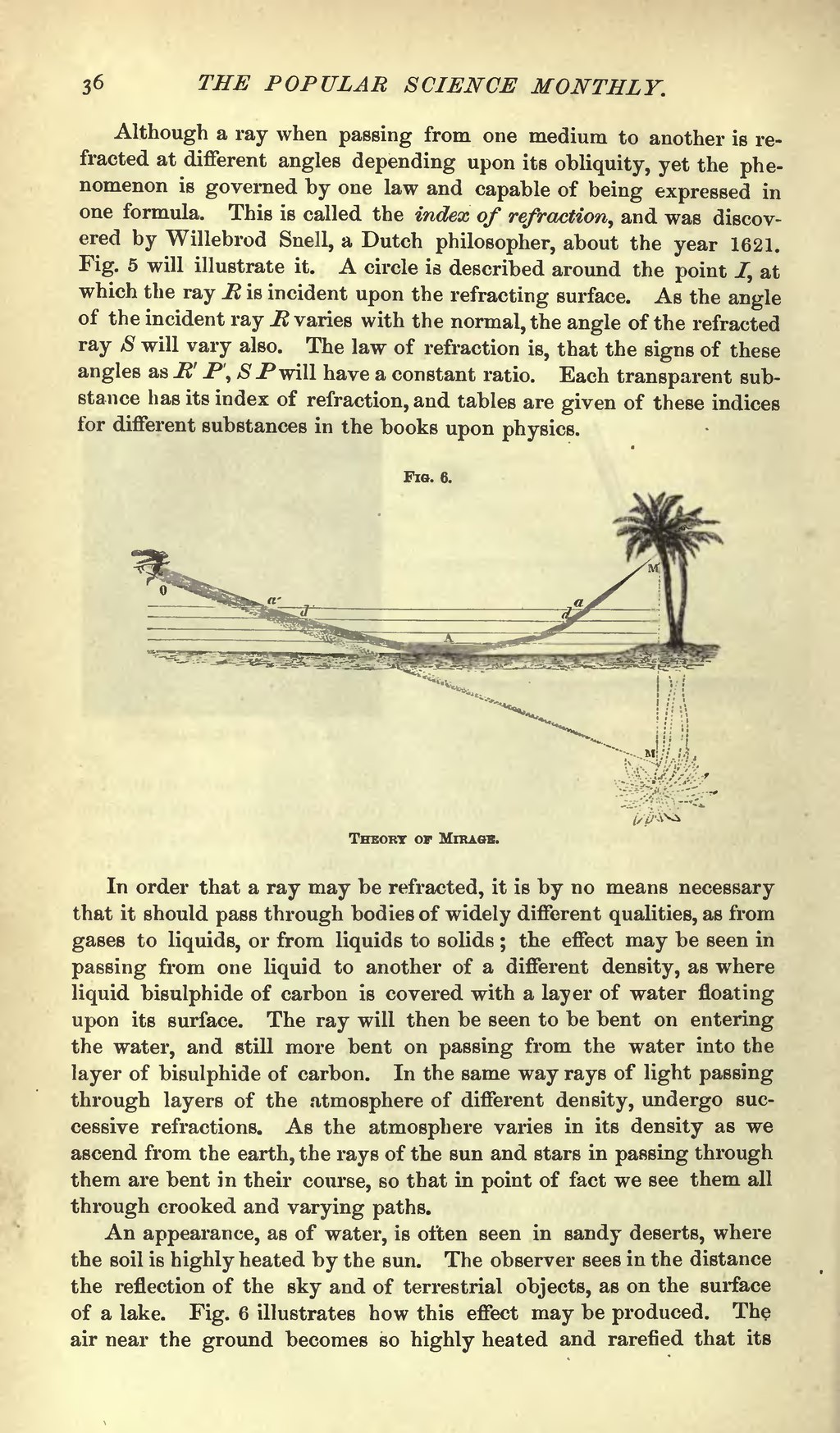Although a ray when passing from one medium to another is refracted at different angles depending upon its obliquity, yet the phenomenon is governed by one law and capable of being expressed in one formula. This is called the index of refraction, and was discovered by Willebrod Snell, a Dutch philosopher, about the year 1621. Fig. 5 will illustrate it. A circle is described around the point I, at which the ray R is incident upon the refracting surface. As the angle of the incident ray R varies with the normal, the angle of the refracted ray S will vary also. The law of refraction is, that the signs of these angles as R' P', S P will have a constant ratio. Each transparent substance has its index of refraction, and tables are given of these indices for different substances in the books upon physics.
Fig. 6.

Theory of Mirage.
In order that a ray may be refracted, it is by no means necessary that it should pass through bodies of widely different qualities, as from gases to liquids, or from liquids to solids; the effect may be seen in passing from one liquid to another of a different density, as where liquid bisulphide of carbon is covered with a layer of water floating upon its surface. The ray will then be seen to be bent on entering the water, and still more bent on passing from the water into the layer of bisulphide of carbon. In the same way rays of light passing through layers of the atmosphere of different density, undergo successive refractions. As the atmosphere varies in its density as we ascend from the earth, the rays of the sun and stars in passing through them are bent in their course, so that in point of fact we see them all through crooked and varying paths.
An appearance, as of water, is often seen in sandy deserts, where the soil is highly heated by the sun. The observer sees in the distance the reflection of the sky and of terrestrial objects, as on the surface of a lake. Fig. 6 illustrates how this effect may be produced. The air near the ground becomes so highly heated and rarefied that its

